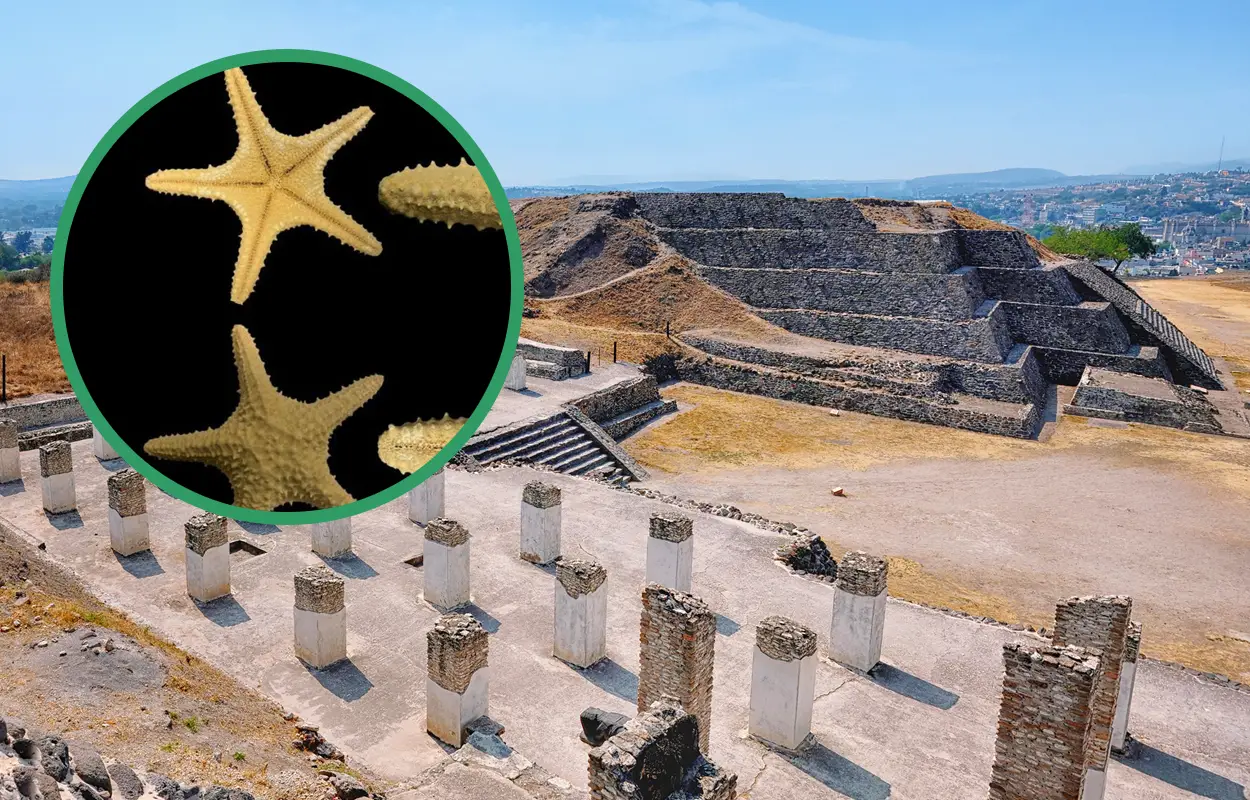Archaeologists from the National Institute of Anthropology and History (INAH) have found starfish in a ritual deposit at the Toltec site of Tula.
Tula was first settled around 400 BC in the Tula Valley, in what is now the southwest of the Mexican state of Hidalgo, northwest of Mexico City.
Following the fall of Teotihuacan, Tula emerged as the capital of the Toltec Empire until its abandonment during the 12th century AD. At its peak, Tula covered an area of 14 km2 and had a population of around 60,000 inhabitants.
Archaeologists from INAH and the Institute of Marine Sciences and Limnology (ICML) at the National Autonomous University of Mexico have recently examined a collection of limestone slabs discovered in a ritual deposit.
Leonardo López Luján, director of the INAH Templo Mayor Project and co-author of an article detailing this study in Arqueología Mexicana, explained that the limestone slabs were part of a complex offering designed to represent a cosmogram (a miniature model of the universe).
The context in which the slabs were found dates to around AD 950 to 1000 and were uncovered in a courtyard of a building known as the Palacio Quemado. Within the deposit was a pyrite and turquoise tezcacuitlapilli, a type of mirror often worn on the back of the waist by Toltec warriors.
Above the mirror was a cosmogram made up of four groups of objects symbolising the cardinal directions: in the north, 11 pinkish shell beads; in the south, 17 mother-of-pearl shell slabs; in the east, a coral fragment; and in the west, a cluster of calcareous.
After morphological sorting, a taxonomic analysis compared with species of modern starfish revealed three starfish of the species Nidorellia armata, commonly known as the “chocolate chip star,” and two of Pentaceraster cumingi, or “cushion star.”
According to the researchers, both species are abundant in the Pacific Ocean, from the Gulf of California to northwestern Peru and the Galapagos Islands, highlighting direct links between the communities of the Early Postclassic period (AD 900-1200) in the Mexican Altiplano and the Pacific coast.
Examples of starfish have previously been found in Tula, as well as on artistic representations on ceremic objects, however, the latest study indicates the symbolic importance that the Toltecs attributed to echinoderms, both in their ritual life and in their cosmological conceptions.
Header Image Credit : C Rabbits
Sources : INAH





